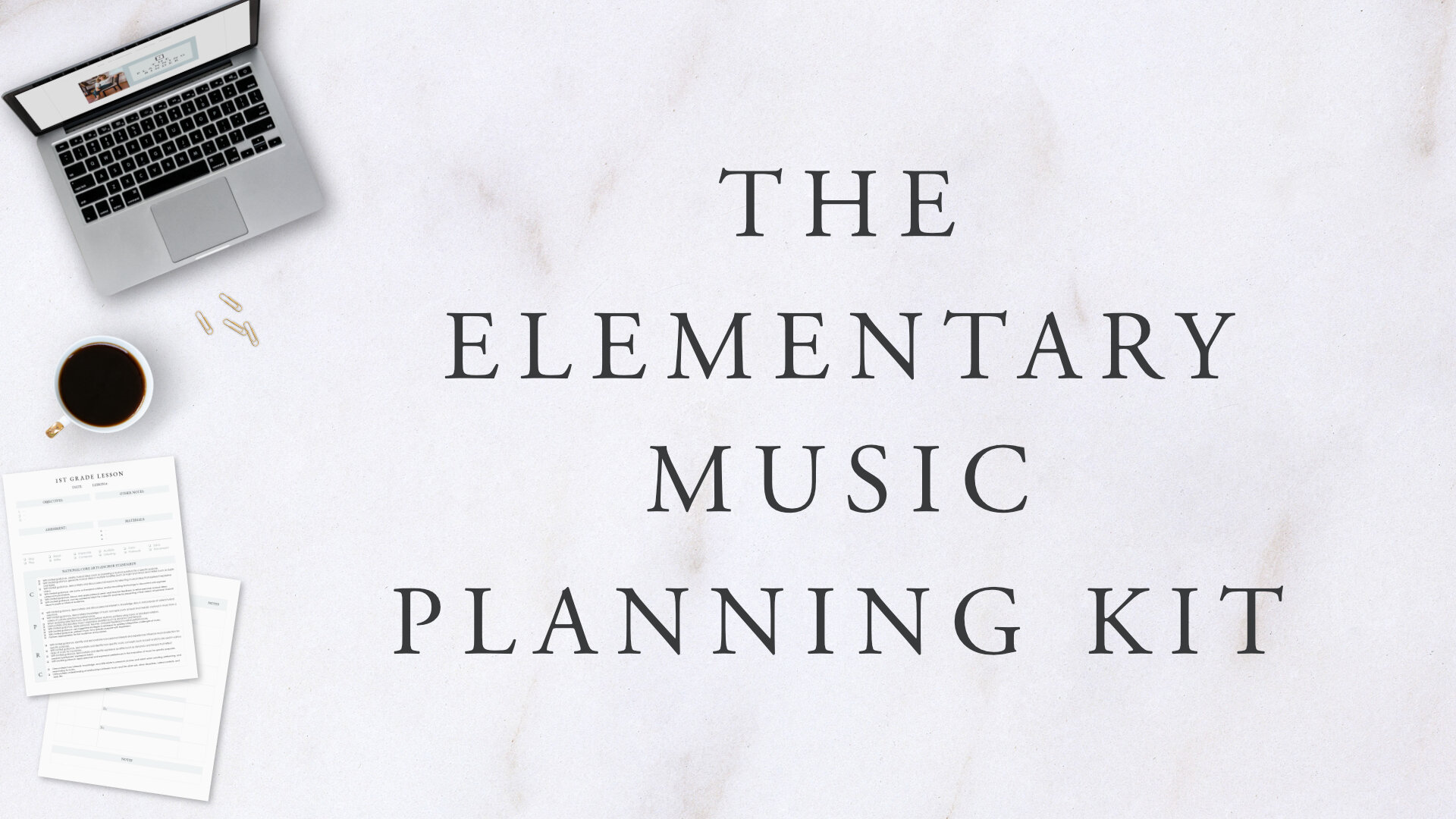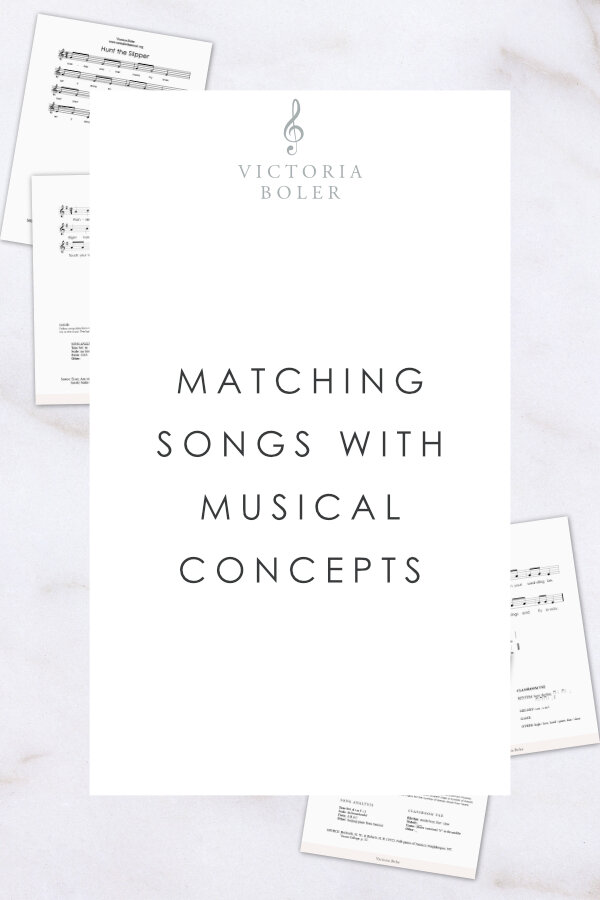It’s never a bad time to think about your big-picture goals for the upcoming year.
Especially now, many educators are taking this time to get organized and make plans for next year to be their best year yet.
When we start planning our year, it’s a great idea to start with a broad overview of each grade level, and the conceptual understandings you want them to have at each level of your program.
Once you understand what concepts you’d like to cover, its much easier to choose songs, activities, performance programs, and finally to create your lessons.
Lesson planning is a breeze when you start big picture instead of lesson-to-lesson!
What is a Curriculum Outline?
A curriculum outline answers the question,
“What am I going to teach?”
A curriculum outline covers your entire curriculum, at every grade level. It’s a zoomed-out view of your musical goals for your whole program.
I love this document because as the school year gets going it’s easy for me to lose track of my goals for my students.
A curriculum outline keeps me accountable.
Something to note right off the bat is that this looks at concepts, not at skills. This curriculum outline doesn’t show what you want students to be able to do with these concepts. Specific skills around improvising, reading, singing, and playing can be specified later in the planning process.
For now, the goal is to get a single sheet of paper that has all your concept goals for your students. This guides the rest of the lesson planning process.
This curriculum outline is a part of my elementary music planning kit. This is a comprehensive guide to planning each grade level. It answers questions like,
What am I going to teach?
When am I going to teach it?
What materials will I use?
What strategies will I use?
Why Write Your Own Curriculum Outline
What we find in the process of creating a curriculum outline is that the act of intentionally thinking through your dreams for your students may end up being more important than the result itself. This valuable paper can have incredible benefit to your students and your own peace of mind.
There’s absolutely nothing wrong with using resources that spell out a curriculum for you. These can be helpful starting guides and can get you going in the right direction if you’re struggling to get started.
The shortcoming with these pre-made curricula is that they fail to take into account your own personal teaching goals for your students.
In contrast, a curriculum outline is a simple way to map out your own ideal curriculum, tailor-made for your own program.
When its done thoughtfully, the rest of your curriculum has a straightforward structure, making it easy to plan out your year.
The Elementary Music Planning Kit walks through the steps to creating your own curriculum outline so it fits your specific needs. It also gives concrete examples and editable templates so you can adapt as you go!
You Can't Teach Everything:
Things are missing in the categories for a curriculum outline.
Where is the category for teaching music history? Where is the Jazz section?
As you choose what broad sections to include (rhythm, melody, form, etc.) you’ll notice that some topics simply don’t make the cut to be included in the curriculum outline. That doesn’t mean that we don’t teach them.
Rather, we choose concepts that are broad enough to encompass our other learning goals.
For example, there’s absolutely no reason that you can’t include a listen to the Surprise Symphony when teaching eighth and quarter notes to your 1st graders. You can also have a great time learning about Ella Fitzgerald when you work on la in A Tisket a Tasket.
The beauty of the curriculum outline is in its simplicity, and how broad it is to fit in the things that you truly care about teaching.
The Plan will Change.
Of course when we’re planning we would love to think that all our plans will be able to be executed perfectly, without a hitch or hiccup.
However, we all know that even though we’ve planned in things like snow days and field trips, the reality is that we will likely get off from our curriculum outline.
That’s okay.
Students may not learn at the rate we expect. Especially if this is your first time mapping out curriculum goals for your students or if you’re starting at a new school, be prepared for the possibility that your curriculum outline may end up looking very different from where you started it.
Every situation is different
Every teaching situation is different, and every school culture has a different musical background. The concepts and corresponding grade levels outlined in a curriculum outline from The Planning Binder might not be the exact fit for your students. That’s the reason all the files come as editable Google documents. Don’t be afraid to move things around!
Keep a Sequence and Build a Foundation
If you choose to make changes, remember that the concepts in your curriculum outline should develop logically, step by step, so your students are set up for success. It’s imperative that learning moves from the known to the unknown.
Also, remember that students need the knowledge and skills of previous concepts before moving to more advanced concepts. Especially with older grades, be sure students have enough of a musical foundation with the “easier” concepts so they can move to more advanced ones.
Start at the End
Take time to think about what you truly care about as a teacher. What skills and understandings do you want students to have when they leave your program? What do you want your students to be able to do at the end of each year? Break things down and plug them in.
You can’t teach it all but when you’re intentional about curriculum planning you can give students a solid foundation that allows them to be lifelong musical learners.















